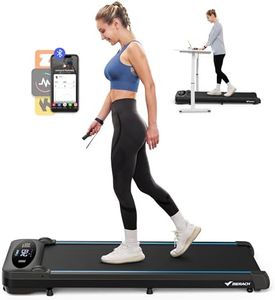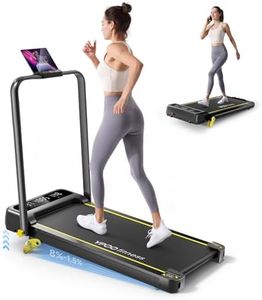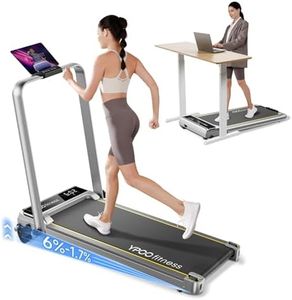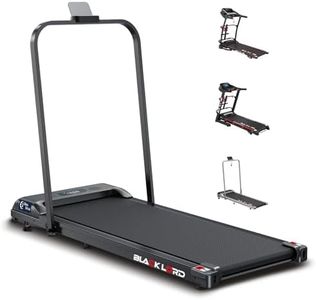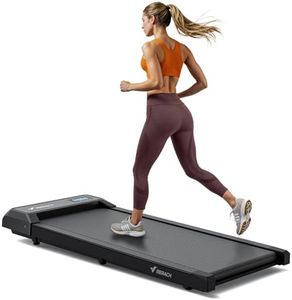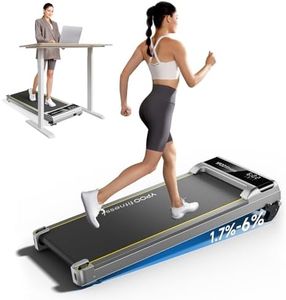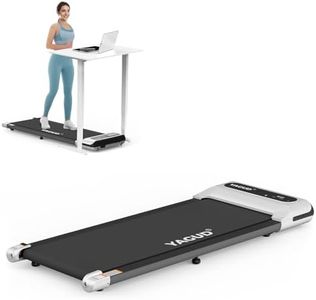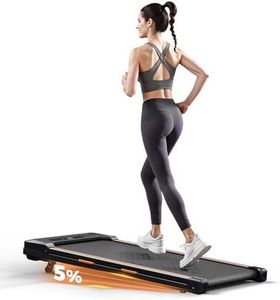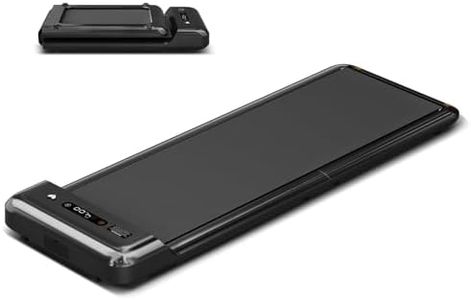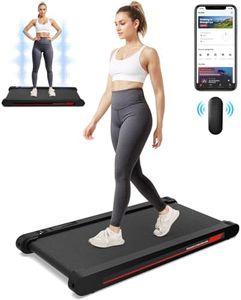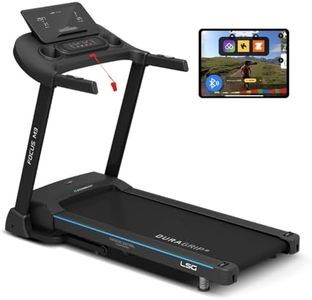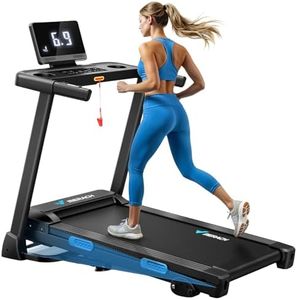We Use CookiesWe use cookies to enhance the security, performance,
functionality and for analytical and promotional activities. By continuing to browse this site you
are agreeing to our privacy policy
10 Best Walking Treadmills
From leading brands and best sellers available on the web.Buying Guide for the Best Walking Treadmills
Choosing a walking treadmill involves more than just picking the first one you see. The best treadmill for you depends on how often you plan to use it, your available space, and the kind of walking experience you want. Start by thinking about your fitness goals, whether you aim for daily casual walks, use it as a supplement to outdoor activity, or need it for rehabilitation or active working. By understanding your usage scenario, you can focus on the features and specifications that will really matter for your daily routine.Motor Power (Horsepower/HP)Motor power, often measured in horsepower (HP), determines how smoothly and quietly a treadmill runs and how well it can handle continuous use. Lower HP models (up to 2 HP) are generally enough for walking, but may feel less robust for heavier users or longer sessions. Mid-range (around 2—2.5 HP) offers smoother operation and is better for heavier use. Higher HP (2.5 HP and above) is more often found in treadmills designed for both walking and light jogging. For most daily walkers, moderate motor power strikes the right balance. Consider your body weight—the heavier you are, the stronger the motor should be—and how frequently you'll use it. If you plan for multiple daily walks or want a machine that lasts for years, a slightly higher HP may be beneficial.
Walking Surface SizeThe walking surface size refers to the length and width of the treadmill belt. A wider and longer surface gives you more room to move comfortably, which is important for natural strides and for feeling stable. Shorter/diminutive surfaces are suited for smaller homes or desks where extreme space savings are needed, but may feel cramped for taller users or those with a long stride. Average-sized belts accommodate most users and work well for casual walking. Longer and wider belts are best if you’re taller, want more comfort, or anticipate sharing the treadmill with others in your household. To pick the right size, think about your height, your stride, and the place where you’ll keep the treadmill.
Speed RangeSpeed range indicates how fast or slow the treadmill belt can move. Walking treadmills generally offer speeds starting from a very slow pace (0.5 mph) up to a brisk walk or light jog (around 4—6 mph). Lower maximum speeds are fine if you’re using the treadmill just for gentle movement, rehabilitation, or walking while working. Higher speed options give you flexibility for faster walks or even a light jog. Think about your top comfortable walking speed and whether you might want to push yourself in the future or share the treadmill with someone who prefers a faster pace.
Incline OptionsIncline settings allow you to walk on an upward slope, simulating uphill walking. Manual or motorized incline features can increase the challenge and help burn more calories, even at lower speeds. Some walking treadmills don’t offer any incline, which is fine for flat, easy walks. Models with limited manual incline require you to get off and adjust the slope, while more advanced versions offer electronic controls so you can change the incline mid-walk. If you want more intensity from your walks or train for hilly terrain, incline features are helpful. If rehab or casual movement is your goal, you may not need any incline settings.
Portability & StorageThis aspect covers how easy it is to move and store your treadmill when it’s not in use. Many walking treadmills are designed with folding options or wheels for portability because they’re meant for home or office use where space is important. Lightweight and low-profile models are easy to tuck under a couch or upright against a wall. Heavier treadmills can be more stable during use but are harder to relocate. Consider where you plan to use and store the treadmill, how often you’ll need to move it, and whether you’ll prefer a stationary or portable design.
Noise LevelNoise level measures how much sound the treadmill makes while operating. Quieter machines are better for shared spaces, apartments, or use during work hours. Models with low-powered motors or better cushioning tend to operate more quietly. If you’ll use the treadmill near others, during video calls, or at odd hours, prioritize a model known for quiet operation. If you have a separate workout area or noise isn’t a concern, this may not be as important.
Weight CapacityWeight capacity tells you the maximum user weight the treadmill can safely handle. Lower capacity models often support users up to 200–220 pounds, while sturdier treadmills can handle 250 pounds or more. Always check this spec to ensure it matches or exceeds the weight of the heaviest person who will use it. Using a treadmill above its capacity can reduce its lifespan and safety.
Control Panel & DisplayThe control panel is where you set your speed, track your walking stats, and sometimes choose workout programs. Simple treadmills might only show speed, time, and distance, while more advanced ones can display calories burned, steps, or heart rate. Easy-to-read and easy-to-use controls are important if you plan to change settings on the go or want quick access to information. Choose a display that gives you the information and level of control that matches your walking routine.
